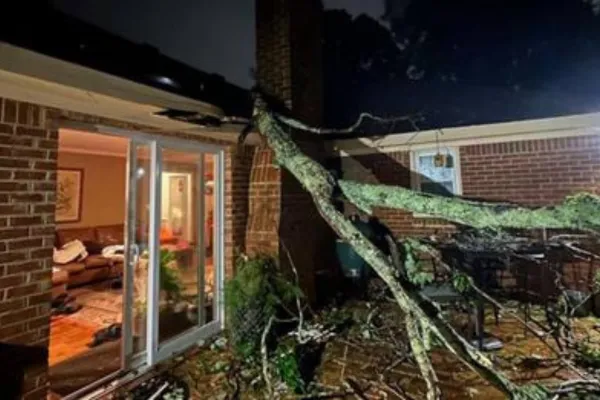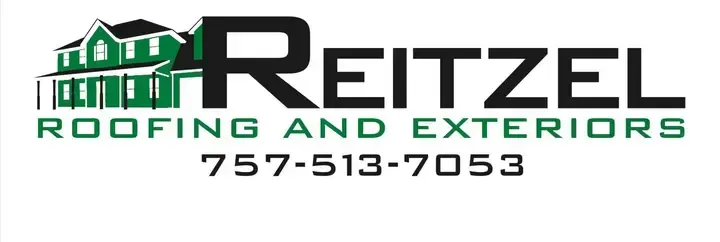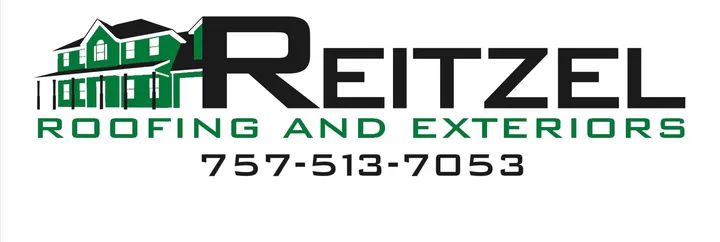LEARNING CENTER
CHECK OUT SOME OF OUR LATEST ARTICLES FROM IN OUR LEARNING CENTER

Protecting Your Home: Addressing Storm Damage in Virginia Beach (September 22-24, 2023)
Virginia Beach, renowned for its stunning coastline and vibrant community, occasionally faces the wrath of Mother Nature. The recent weekend of September 22-24, 2023, was a stark reminder of the unpredictable forces of nature. A severe storm descended upon the area, leaving behind a trail of damage and uncertainty. In this comprehensive guide, we will delve deep into the impact of this recent storm and provide a step-by-step approach to assess and address storm damage effectively. Reitzel Roofing & Exteriors is your trusted partner in restoring and protecting your home from the aftermath of this tempest.
Understanding the Storm
Storm Overview
The storm that swept through Virginia Beach during that fateful September weekend was a formidable force of nature. With sustained high winds, torrential rain, and thunderous lightning, it wreaked havoc across the region. The storm system covered a vast area, affecting numerous neighborhoods within Virginia Beach, particularly the coastal and low-lying areas.
Types of Storm Damage
Wind Damage
The relentless gusts of wind were one of the primary sources of destruction during this storm. Winds in excess of 70 miles per hour uprooted trees, tore off roofing materials, and sent debris hurtling through the air. Understanding the correlation between wind speed and damage severity is vital in assessing the extent of the destruction.
Water Damage
Heavy rainfall and flooding were other significant components of this storm's fury. With streets inundated and drainage systems overwhelmed, many homes experienced water infiltration, which can lead to various types of damage, from structural issues to mold growth.
Structural Damage
The sheer force of the storm led to structural damage in homes and buildings. Walls, foundations, and even entire structures were compromised by the intense wind and rain. Identifying structural damage early is crucial to prevent further deterioration.
Assessing Storm Damage
Safety First
Before embarking on a detailed assessment of your property, it's imperative to prioritize safety. Keep these safety precautions in mind:
Stay Informed: Monitor weather updates and ensure that it is safe to venture outside before conducting an assessment.
Watch for Hazards: Be cautious of downed power lines, unstable structures, and potential hazards.
Use Protective Gear: Wear appropriate safety gear, including gloves, helmets, and sturdy footwear.
Exterior Inspection
Roofing Damage
Your roof is your first line of defense against storms, and it often bears the brunt of the damage. Here's how to inspect your roof for visible damage:
Check for Missing Shingles: Look for any shingles that may have been ripped off or displaced by the wind.
Inspect Flashing: Examine the metal flashing around roof penetrations like chimneys and vents for damage.
Gutter Assessment: Check gutters and downspouts for debris and damage, as clogs can lead to water pooling and leaks.
Siding and Window Damage
Siding and windows are susceptible to wind damage and flying debris. Here's what to look for:
Cracks and Dents: Inspect the siding for cracks, dents, or punctures caused by debris impact.
Window Damage: Check windows for cracks, broken panes, or compromised seals.
Interior Inspection
While exterior damage may be more visible, it's crucial not to overlook potential interior issues. Water intrusion can lead to concealed damage that may worsen over time:
Ceiling Stains: Check ceilings for water stains, which can indicate roof leaks.
Check for Mold: Inspect areas prone to moisture accumulation for signs of mold or mildew growth.
Electrical Issues: Be vigilant for electrical problems, as water infiltration can damage wiring and pose a fire hazard.

Roofing and Siding Damage
Roof Inspection
Your roof is the most exposed part of your home during a storm, and it requires a meticulous inspection:
Examine Shingles: Look for missing, lifted, or damaged shingles. Pay attention to granule loss, which can signal shingle wear.
Flashing Assessment: Check the flashing around roof penetrations for cracks or gaps.
Inspect Gutters: Examine the condition of gutters, as damaged or clogged gutters can lead to water damage.
Siding Inspection
Siding serves both functional and aesthetic purposes, but it can be vulnerable during storms:
Identify Cracks and Holes: Inspect the siding for cracks, holes, or punctures caused by debris impact.
Loose or Warped Panels: Look for loose or warped siding panels, which can compromise your home's insulation and curb appeal.
Immediate Repairs
Swift action is essential to prevent further damage:
Temporary Fixes: Implement temporary repairs, such as tarping damaged areas of the roof, to prevent further water infiltration.
Emergency Board-Up: Secure broken windows and doors with plywood or other protective materials.
Water Damage and Mold Prevention
Water damage can be insidious and lead to mold growth if not addressed promptly. Here's what to do:
Identifying Water Damage
Water damage can manifest in various ways:
Water Stains: Look for water stains on ceilings and walls.
Warped Surfaces: Check for warped flooring, walls, or ceilings.
Musty Odors: Mold and mildew often produce musty, unpleasant odors.
Immediate Action
Taking immediate steps can mitigate water damage:
Address Leaks: If you discover leaks, place containers to collect water and towels to absorb moisture.
Ventilation: Increase ventilation to aid in drying out affected areas.
Dehumidification: Use dehumidifiers to reduce moisture levels, which can deter mold growth.
Mold Prevention
Preventing mold growth is crucial:
Proper Drying: Ensure thorough drying of affected areas to prevent mold colonization.
Professional Assessment: Consider hiring a professional mold remediation expert for extensive water damage.
Ventilation and Dehumidification: Keep indoor humidity levels in check with proper ventilation and dehumidification.
Insurance Claims and Documentation
Navigating the insurance claims process can be complex, but it's essential for a smooth recovery:
Contacting Your Insurance Company
Initiate contact with your insurance company as soon as possible:
Report Damage: Provide a detailed report of the storm damage to your insurer.
Document Communications: Keep records of all interactions with your insurance company.
Documenting Damage
Proper documentation is critical for your insurance claim:
Photograph Damage: Take clear, well-lit photographs of all damage, both inside and outside your home.
Detailed Descriptions: Provide comprehensive descriptions of the damage in your written documentation.
Create an Inventory: List damaged items and their estimated value.
Working with Contractors
Professional contractors, such as Reitzel Roofing & Exteriors, can play a vital role in the insurance process:
Assessment and Estimates: Rely on contractors for accurate damage assessments and repair estimates.
Contractor Communications: Ensure your contractor communicates with your insurance adjuster to streamline the process.
Quality Repairs: Trust professionals for high-quality repairs that meet insurance requirements.
Storm Preparedness for the Future
Pre-Storm Preparation
Preparation is key to mitigating storm damage:
Secure Outdoor Items: Anchor or bring indoors outdoor items like furniture, grills, and potted plants.
Tree Maintenance: Trim overhanging branches and dead limbs to reduce the risk of falling debris during storms.
Impact-Resistant Materials: Consider using impact-resistant roofing and siding materials for enhanced storm protection.
Emergency Kits
Having an emergency kit ready is essential:
Basic Supplies: Include items like flashlights, batteries, non-perishable food, bottled water, and a first-aid kit.
Important Documents: Keep copies of essential documents, such as insurance policies, identification, and medical records.
Insurance Review
Regularly review and update your insurance policy:
Coverage Assessment: Evaluate your coverage to ensure it aligns with your property's current value and your needs.
Policy Changes: Discuss policy changes with your insurer, such as adding endorsements for specific risks.
Conclusion
While the recent storm in Virginia Beach brought chaos and uncertainty, it also underscores the importance of being prepared and informed. Storms may come and go, but with the right knowledge and resources, you can protect your home and loved ones. Reitzel Roofing & Exteriors is committed to assisting you in every step of the process, from assessing storm damage to restoring the safety and beauty of your home. Remember, your home can weather any storm when you're equipped with preparedness and professional guidance.
For expert storm damage assessment and repairs in Virginia Beach, contact Reitzel Roofing & Exteriors today. Our dedicated team is here to safeguard your home and ensure it remains a haven of safety and comfort, no matter what nature throws your way.

Our Services
Roof Repairs
Roof Leaks
Roof Storm Damage
Roof Replacement
Residential Roofing
Commercial Roofing
Siding
Trim
Windows
Fencing
Decks
Resources
Learning Center
Financing
Areas We Service
About Us
Contact Us
Privacy Policy
Copyright © 2022 Reitzel Roofing and Exteriors
All Rights Reserved
Our Services
Resources










